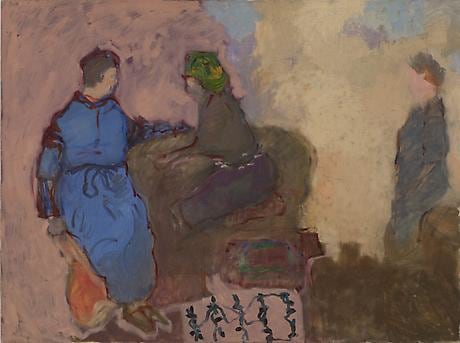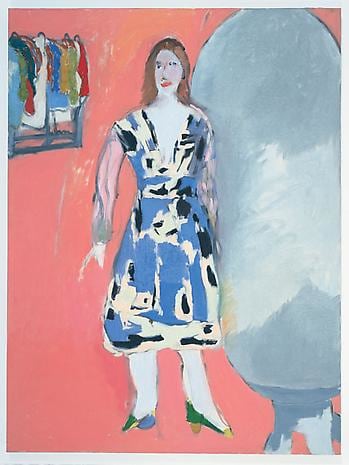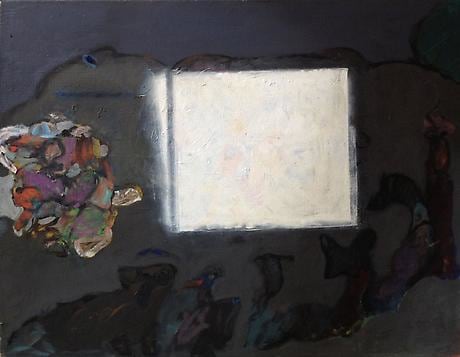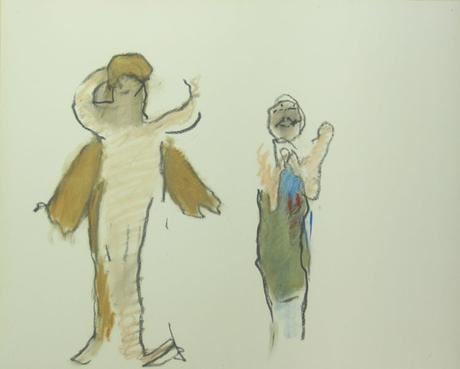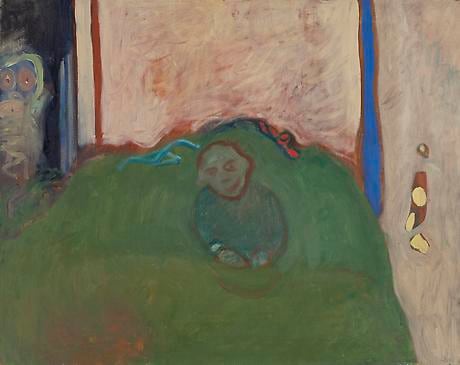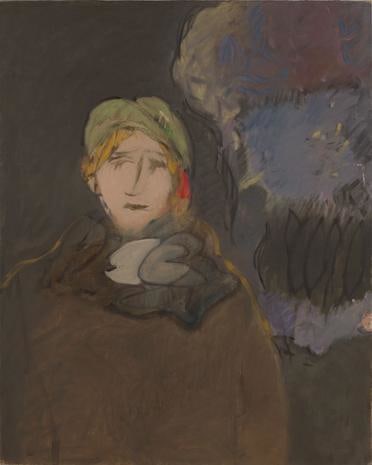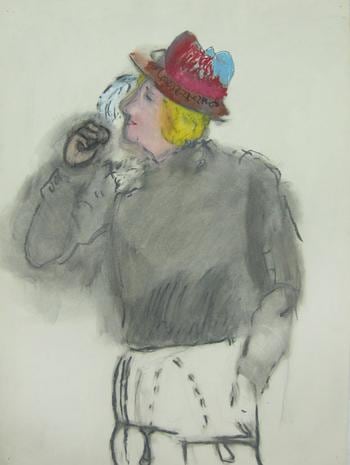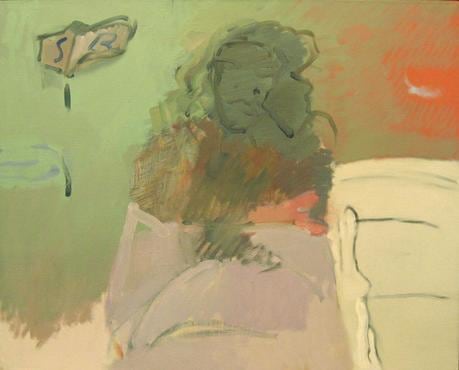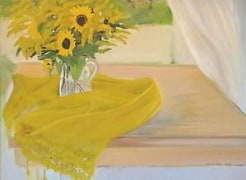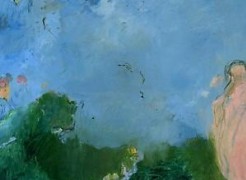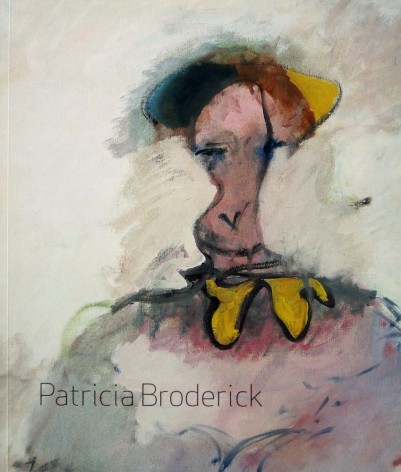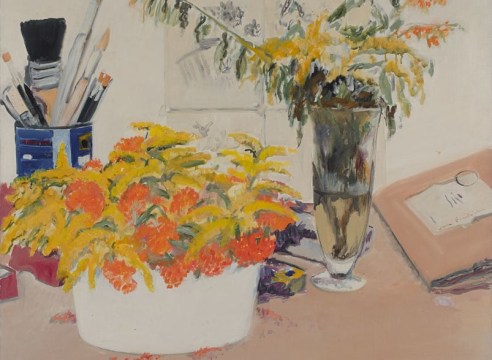
For the Greenwich Village autobiographical artist Patricia Broderick, painting was a means of recalling familial memories and past life events. Broderick took inspiration from important moments, such as illness or death, and quiet contemplative moments to act as stages for her murky mysterious figurative works. Her aesthetic bares a highly charged psychological atmosphere, often leaving one with feelings of an awkward comedy or a foreboding melancholy. The viewer can easily get lost in Broderick’s vignettes, where she leaves her figures stranded in solitarily longing, gazing out at distant landscapes through their own windows.
Born in 1925 to Milton and Sophie Taub Biow, Jewish immigrants from Germany and Poland, Patricia Biow was raised on the Upper East Side in New York City before devoting a majority of her life to the Village. During her teenage years at the Dalton School, she painted under the tutelage of the Mexican artist Rufino Tamayo and Vaclav Vytiacil. She continued to study with Tamayo, on an extended sojourn with Tamayo and his wife Olga in the early 1940s at what would eventually become the Instituto Allende, San Miguel de Allende. Returning to New York she enrolled in the Neighborhood Playhouse where she met and married James Broderick, baring three children; Martha (1951), Janet (1955) and Matthew (1962).
In addition to her painterly aspirations, Patricia Broderick worked as a playwright for most of her artistic career. She began writing plays in the 1940s. Many of her works were performed in New York and London. In addition, Broderick was a screenwriter for television and film, working on Hitchcock’s Spellbound, the 1996 film Infinity and the 1989 civil war drama Glory, as well as the adaptation of Intermezzo. Broderick’s paintings have been exhibited at Tibor de Nagy since 2006.

